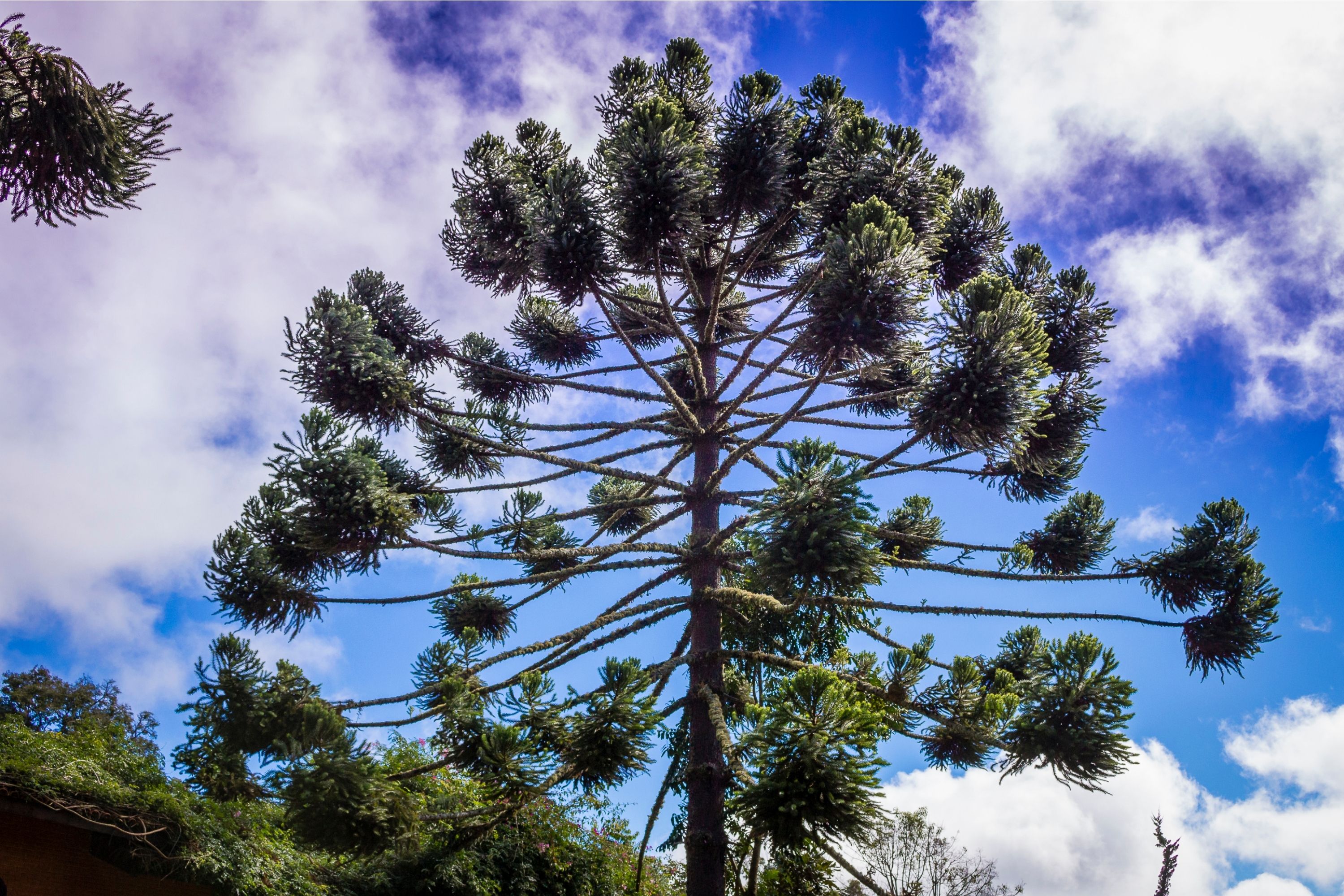Parana Pine
(Araucaria angustifolia)

Description
Araucaria angustifolia is a species of Plantae in the genus Tracheophyta, which was first described by Antonio Bertoloni, and given its simplified Asian name by Carl Ernst Otto Kuntze. Araucaria angustifolia belongs to the genus Araucaria, and the family Araucariaceae. The IUCN classifies the species as endangered. Araucaria angustifolia, the Paraná pine, Brazilian pine or candelabra tree (pinheiro-do-paraná, araucária or pinheiro brasileiro), is a critically endangered species in the conifer genus Araucaria. Although the common names in various languages refer to the species as a "pine", it does not belong in the genus Pinus. The genus Araucaria was part of terrestrial flora since the Triassic and found its apogee in Gondwana. Today, it is restricted to the Southern Hemisphere and has 19 species. Covering an original area of 233,000 square kilometres (90,000 sq mi), it has now lost an estimated 97% of its habitat to logging, agriculture, and silviculture. It is native to southern Brazil (also found in high-altitude areas of southern Minas Gerais, in central Rio de Janeiro and in the east and south of São Paulo, but more typically in the states of Paraná, Santa Catarina and Rio Grande do Sul). According to a study made by the Brazilian researcher Reinhard Maack, the original area of occurrence represented 36.67% of the Paraná state (73,088 km2 or 28,219 sq mi), 60.13% of the Santa Catarina state (57,332 km2 or 22,136 sq mi), 21.6% of the São Paulo state (53,613 km2 or 20,700 sq mi) and 17.38% of the Rio Grande do Sul state (48,968 km2 or 18,907 sq mi). It is also found in the northeast of Argentina (Misiones and Corrientes), locally in Paraguay (Alto Paraná), growing in low mountains at altitudes of 500–1,800 metres (1,600–5,900 ft) and in northern regions of Uruguay where it was thought to be extinct until recent discoveries. The prehistoric distribution of A. angustifolia in earlier geologic periods was very different to the present day, fossils were found in the Northeast Region, Brazil. The present day range is recent, the species moving into this area during the later Pleistocene and early Holocene. This chorological shift may possibly be due to climatic change and the migration of mountain flora by way of river courses. It is an evergreen tree growing to 40 m (130 ft) tall and 1 m (3 ft 3 in) diameter at breast height. However, the largest individual, near Nova Petropolis, Rio Grande do Sul State, Brazil is 147.7 feet (45 meters) in height.
Taxonomic tree:







